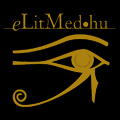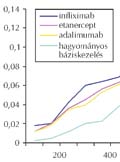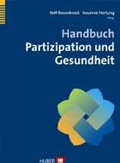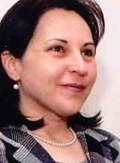The eLitMed.hu medical portal uses computer cookies for convenient operation. Detailed information can be found in the Cookie-policy.
Lege Artis Medicinae - 2013;23(02)
Content
[New possibilities in treating hyperlipidemia]
[In the fight against atherosclerosis, statin therapy is one of the most important elements. On the basis of data from the past few years the clinical introduction of a more effective statin is not expected, however, in order to improve cardiovascular prevention further development of agents that reduce LDL-cholesterol levels more effectively than currently used statins is warranted. The need for the development of new cholesterol-lowering therapeutic options is also supported by the existence of statin intolerance. The currently available combination therapies do not provide additional mortality benefits compared with statin monotherapy. The new solutions include fourth-generation statin molecules that primarily aim to enhance the NO-donor capacity of statins, and to reduce their muscle toxicity. Certain compounds that affect cholesterol synthesis (squalene synthase inhibitors, MTP inhibitors, ACAT inhibitors) need to be further analysed because of the risk of side effects. The use of an antisense oligonucleotid that blocks the mRNA of apoB, the main protein on the LDL-particle and antibodies that inhibit the protein PCSK9 that promotes the intracellular breakdown of the LDL-receptor seems to be much more promising. Besides the lowering of LDLcholesterol level, studies have focused on the benefits of increasing HDL-cholesterol levels. Unfortunately, recently completed analyses show that new forms of the strong HDL-C increasing nicotinic acid have not provided any additional benefit when added to statin therapy. Similarly, the adverse effects associated with the promising CETP inhibitors and the lack of additional benefit when combined with statins question the significance of this drug class. The necessity for an absolute increase of HDL-cholesterol levels needs to be revised on the basis of new data, in other words, the exact role of the HDL particle in atherosclerosis needs to be further investigated.]
[Infectious diseases associated with biological therapy]
[The use of biological therapeutic agents increases the risk of certain infectious diseases. The greatest hazards are the reactivation of tuberculosis or hepatitis B infection and the development of sepsis. The degree of risk is comparable to that experienced with the use of routine DMARD therapy: in case of an adequate choice of treatment the risk is equal to or slightly higher than that of conventional treatment. However, this hazard is definitely smaller than that associated with the use of corticosteroids at doses necessary to reach the required immunosuppressive effect. This article provides a brief summary of potential infectious illnesses on the basis of the literature.]
[Public health care prevention in Hungary: are we doing what we should?]
[Primary prevention means health protection and disease prevention in the population, whereas secondary prevention includes early diagnosis and treatment to prevent the progression of diseases and the development of complications. Both ways of prevention are present in public health programs, but primary prevention measures are usually less substantial. METHODS - The “Comprehensive Health Protection Screening Program of Hungary 2010-2020” was organised in 2010 as part of the National Cardiovascular Program. In this program, a mobile screening station (set up on a truck) tours the country and provides a complex health status and risk assessment at village fairs as well as at offices. RESULTS - In the past three years, this station provided complex screening for 65267 individuals and lifestyle counseling and health education for 132964 people at 528 locations, touring 58807 km. The aim of the Program is to provide a comprehensive overview of the health status of the Hungarian population, and to make it possible to measure and record the long-term changes of the health status of the Hungarian population. Another goal is to inform those being screened about their health status and to highlight the importance of health protection and disease prevention. On the basis of the results, in the past three years the Program has been able to achieve its targets, which provides a good basis for its continuation.]
[Necrotising autoimmune myopathy showing dermatomyositis symptoms during persistent statin treatment]
[INTRODUCTION - Dermatomyositis is an idiopathic autoimmune disease. Diagnosis has to be confirmed by biopsy, because clinical symptoms can be similar to those in other myopathies. CASE REPORT - The authors describe the development of dermatomyositis in a 59- year-old man. The patient had a heart attack in 1988. He had been taking simvastatin for three years and atorvastatin since 2002. In June 2008 he complained of myalgia and weakness, became physically very inactive but visited our specialist only half a year later. Laboratory examinations showed a substantial increase of CK, CKMB, LDH and HBDH with troponin T positivity (troponin I was negative). A subsequent biopsy confirmed dermatomyositis. Treatment with azatioprine and methylprednisolone and suspending statin therapy resulted in the regression of his clinical symptoms, his muscles gradually became stronger and his laboratory values normalised. CONCLUSION - During statin treatment in 5% of the cases myopathy can occur, which might develop into amore severe inflammatory disorder.]
[A remarkably successful therapy with gliclazid treatment in type 2 diabetes mellitus]
[INTRODUCTION - Sulfonylureas have become sidelined as second-line preparations as their use has been associated with an increased occurrence of weight gain and hypoglykaemia. In the case reported, however, therapeutic goals have been achieved with the use of gliclazid. CASE REPORT - A 45-year-old man with type 2 diabetes mellitus was using a metformin XR preparation. His HbA1c level was high and his main complaint was distention. His abdominal complaint was also obstructing his diet. Because of the high HbA1c level and overweight I initiated incretin-mimetic treatment. Due to the worsening of abdominal complaints I replaced the treatment with gliclazid, after thoroughly informing the patient. With gliclazid treatment the patient's abdominal complaints subdued, he was able to maintain his diet, lost 14 kg in three months and the parameters of his carbohydrate metabolism normalised. CONCLUSION - In case of abdominal complaints, a repeated anamnesis of the diet can reveal metformin intolerance. In such cases, the use of gliclazid can lead to therapeutic success with no gastrointestinal adverse effects.]
[Economic relations of laparoscopic colorectal surgery in hopitals]
[In this review, we compared economic and physiological observations reported in the literature that are related to laparoscopic versus conventional colorectal surgery. Our study group has modeled the patient journey of those with colorectal disease, and analysed the accounting and controlling data of an impatient institution in Budapest for various types of colorectal interventions. We compared the costs determined for laparoscopic and conventional colorectal surgery and the actual costs spent by the inpatient care institution with financing data of the National Health Insurance Fund. On the basis of our study, we conclude that in Hungary colorectal surgery performed by laparoscopy is much more expensive that conventional surgery as the cost of the operating room - in particular, the disposable tools - is high and currently it is not financed as a separate intervention type. In case of colorectal diseases, laparoscopic and traditional interventions have not been differentiated, observed and compared yet.]
[“I can’t do it alone.” Household workload and division of labour among Hungarian female physicians]
[BACKGROUND - Mental and somatic morbidity and role conflict among female physicians has become an issue of growing interest in the Hungarian and international literature. Among the potential backgrounds factor, the household labour is a less studied field. METHODS - A qualitative, pilot study (N=36) was conducted among female physicians in Hungary. The structured interview was focused on amount and division of household labour, the attitudes of household labour division and the harmonization of professional workload and household work. RESULTS - About of 66% of interviewed female physicians do the household work alone. About 33% is supported by partner in the household labour, and in one case the male partner does the household work alone. The responders are not satisfied with the division of household labour, and they want the amount of professional workload and household work both to be reduced. CONCLUSIONS - Our study is a pilot for further quantitative research. Our findings suggest that the Hungarian female physicians have traditional household labour division. The lack of the division is important to understand the problem of role conflict and the morbidity.]
1.
Clinical Neuroscience
Is there any difference in mortality rates of atrial fibrillation detected before or after ischemic stroke?2.
Clinical Neuroscience
Factors influencing the level of stigma in Parkinson’s disease in western Turkey3.
Clinical Neuroscience
Neuropathic pain and mood disorders in earthquake survivors with peripheral nerve injuries4.
Journal of Nursing Theory and Practice
[Correlations of Sarcopenia, Frailty, Falls and Social Isolation – A Literature Review in the Light of Swedish Statistics]5.
Clinical Neuroscience
[Comparison of pain intensity measurements among patients with low-back pain]1.
Clinical Neuroscience Proceedings
[A Magyar Stroke Társaság XVIII. Kongresszusa és a Magyar Neuroszonológiai Társaság XV. Konferenciája. Absztraktfüzet]2.
3.
Journal of Nursing Theory and Practice
[A selection of the entries submitted to the literary contest "Honorable mission: the joys and challenges of our profession" ]4.
Journal of Nursing Theory and Practice
[End of Life and Palliative Care of Newborns in the Nursing Context]5.
Journal of Nursing Theory and Practice
[Aspects of Occupational Health Nursing for Incurable Patients ]
















